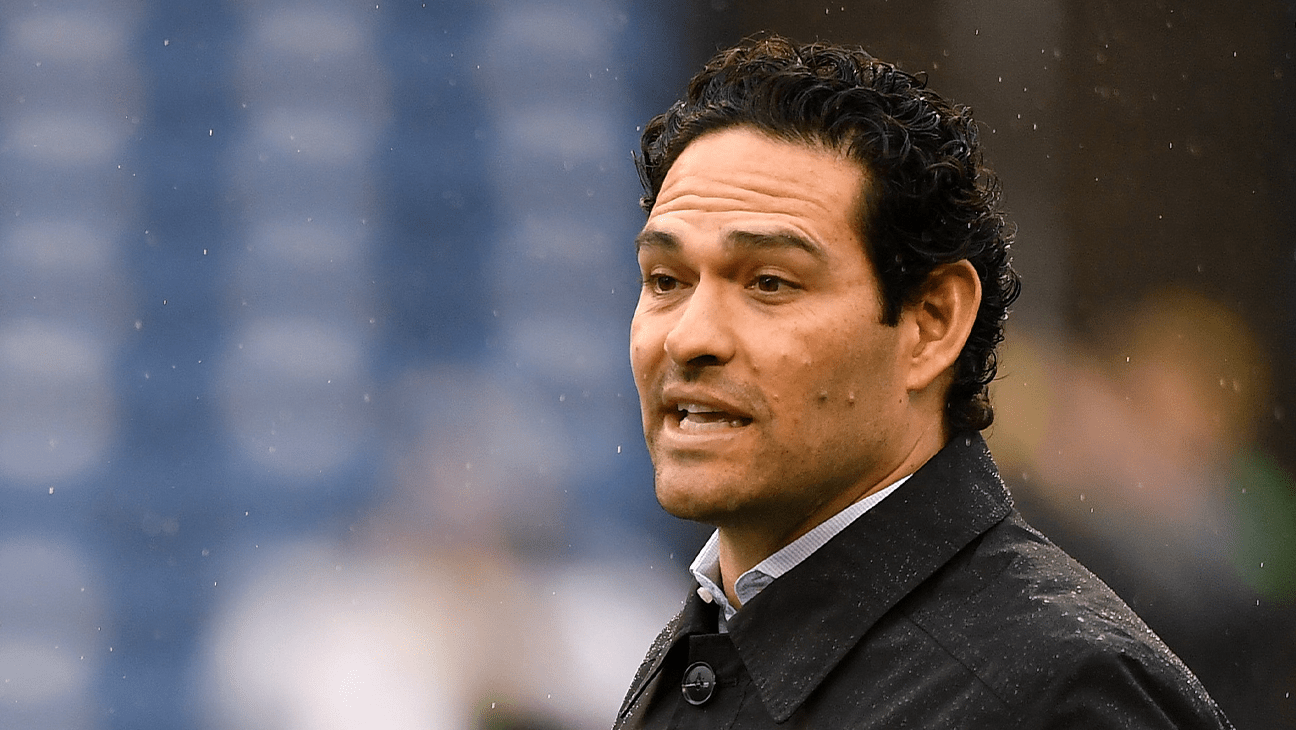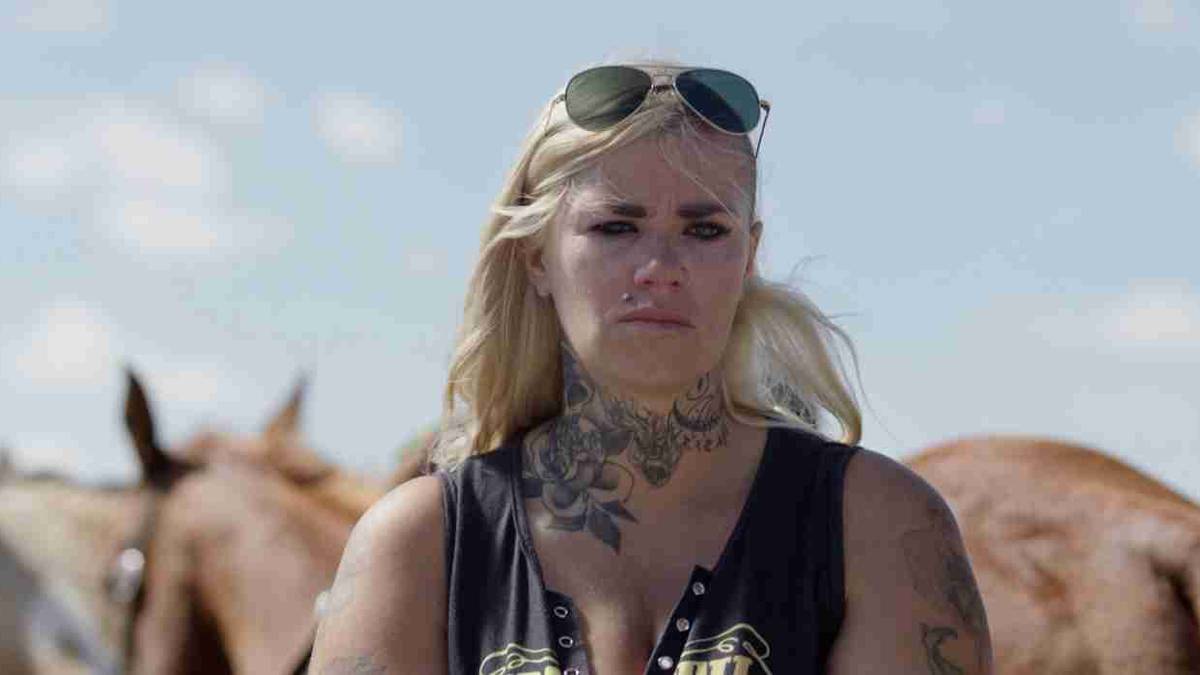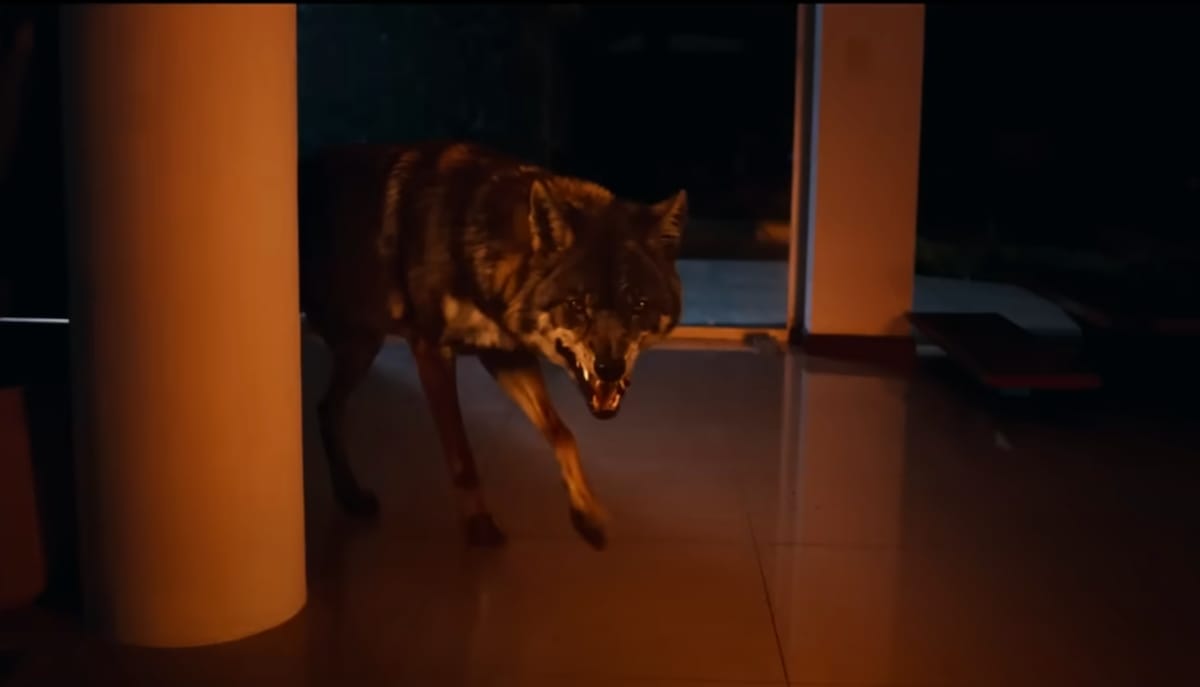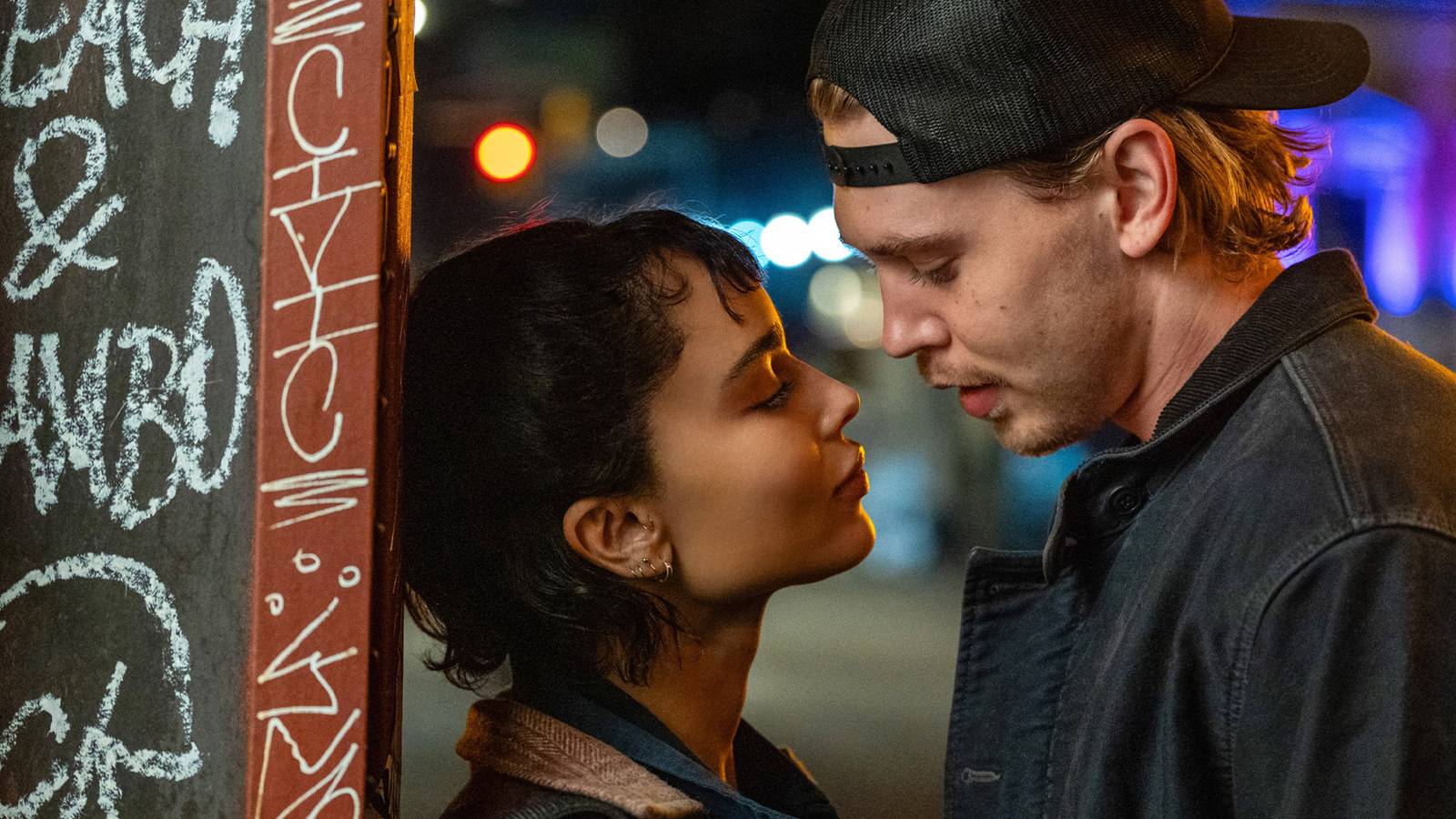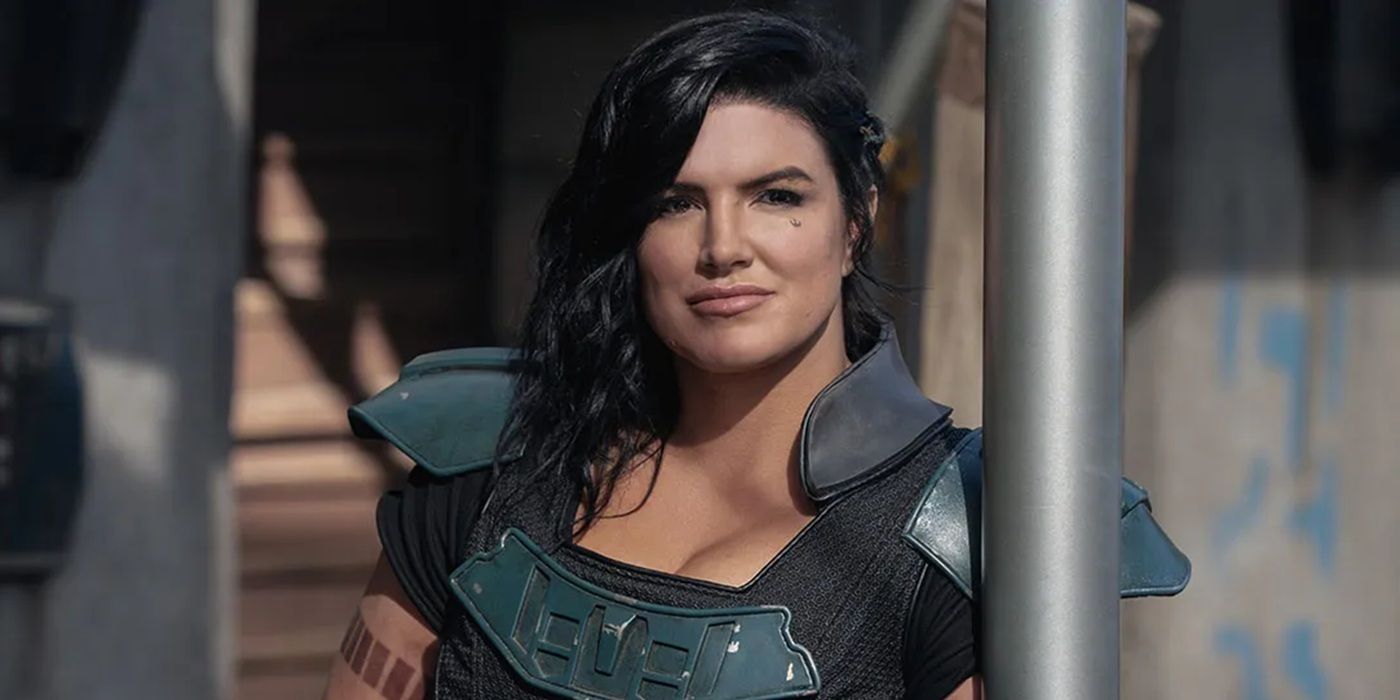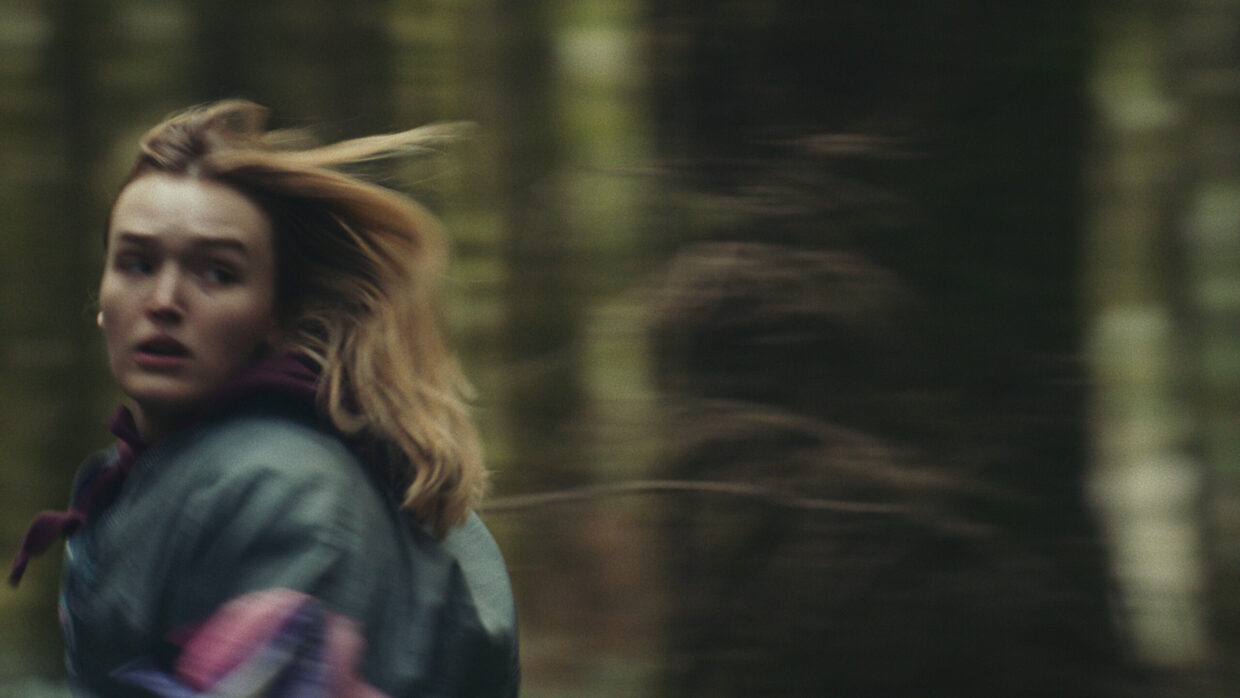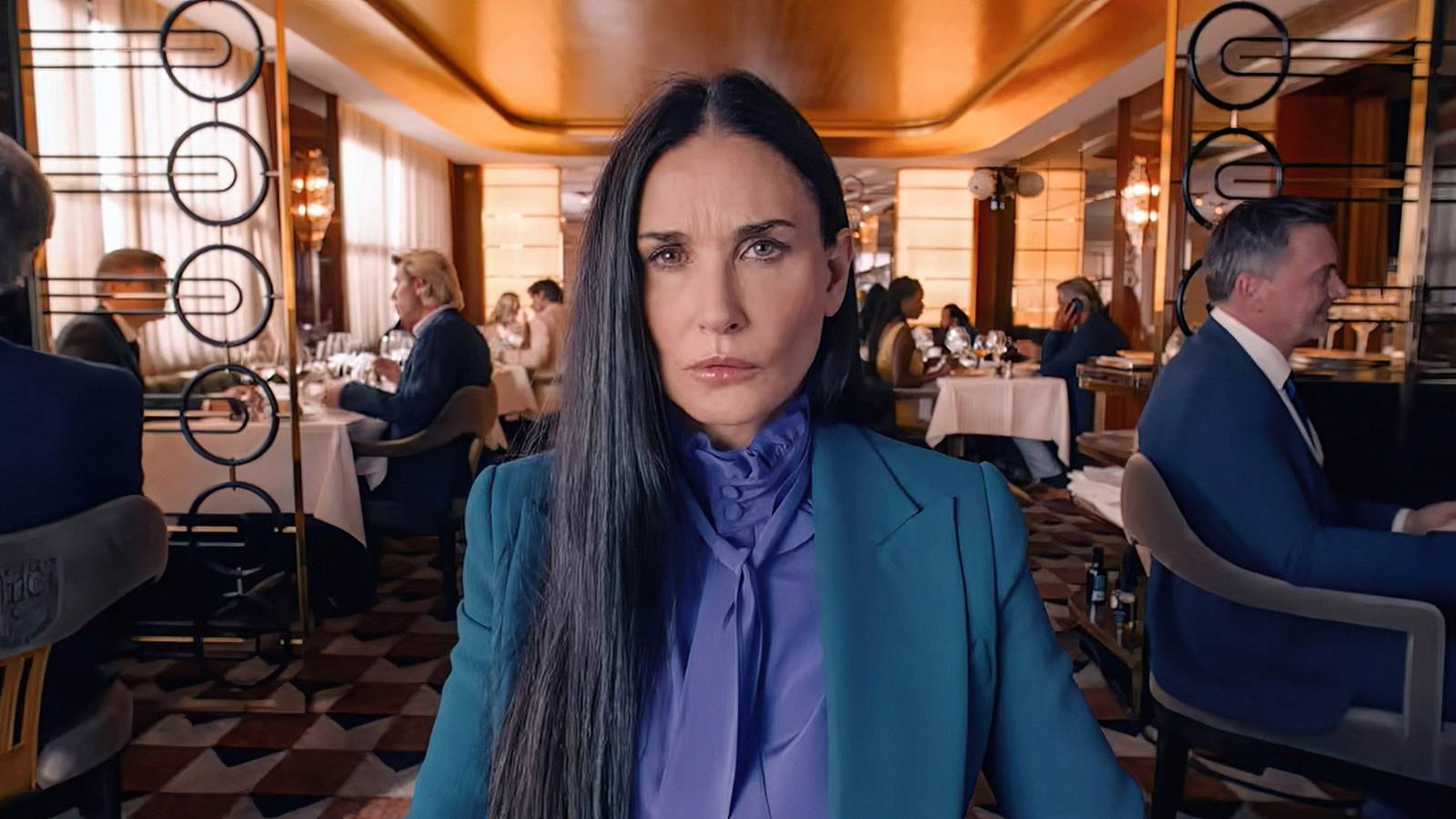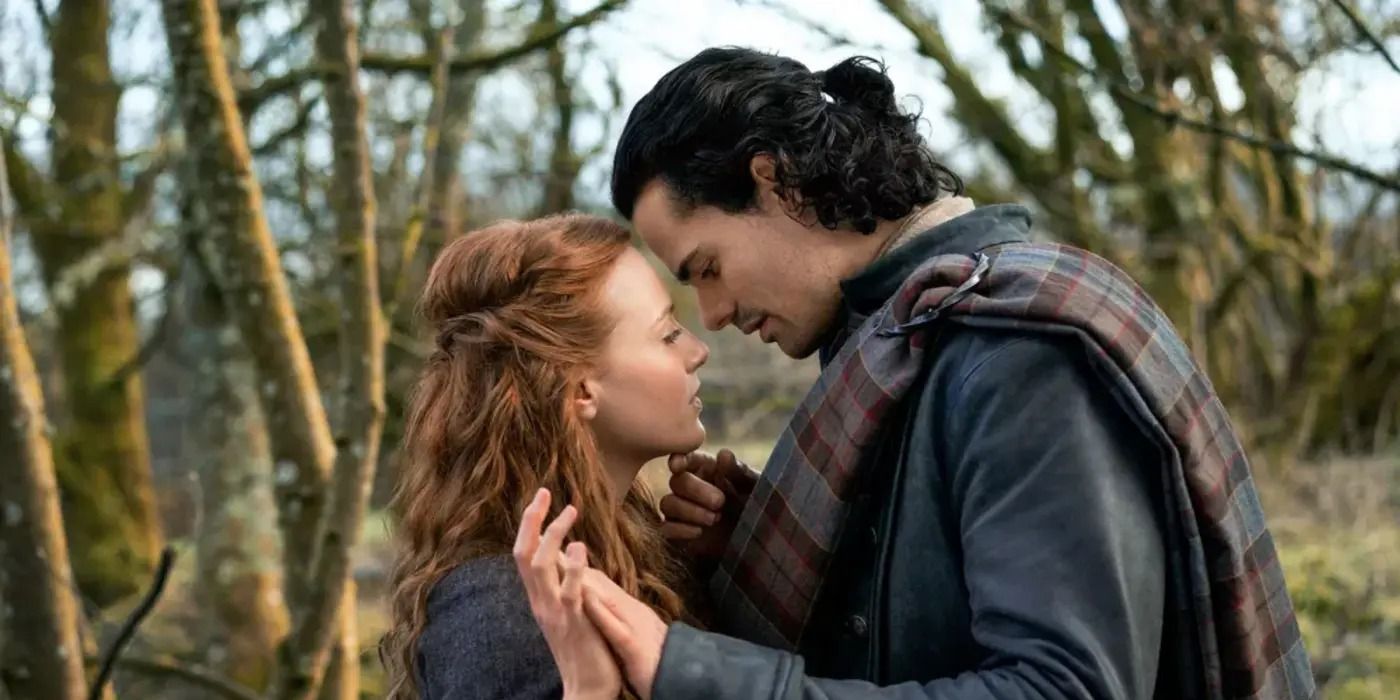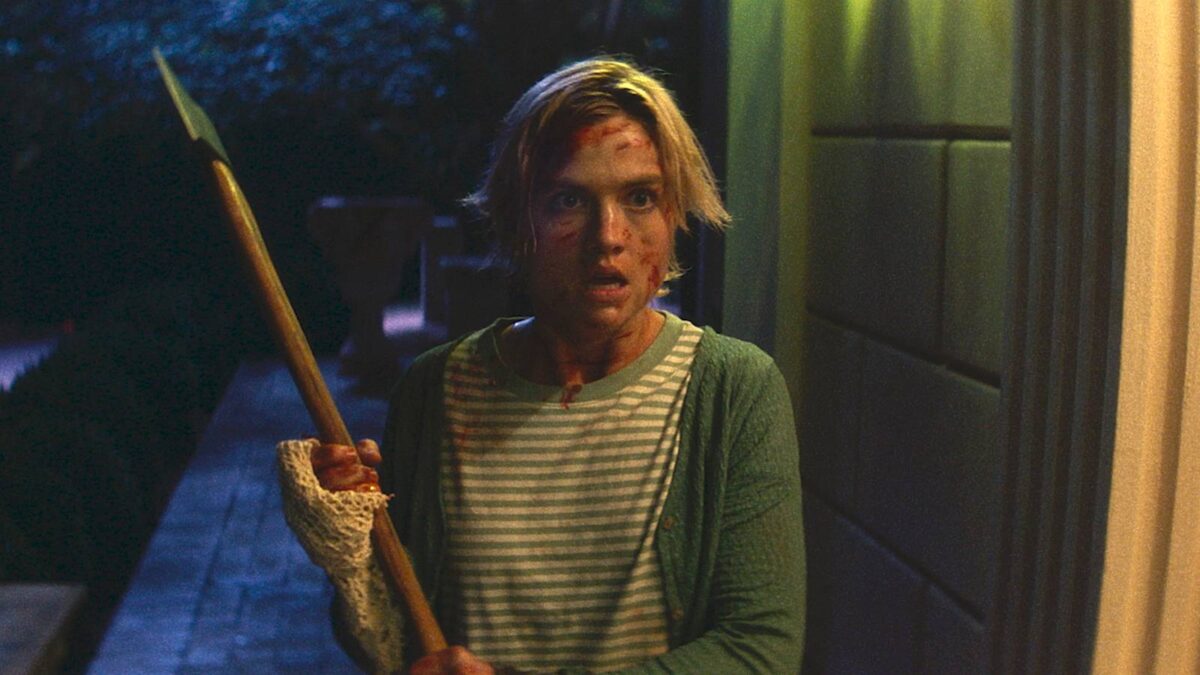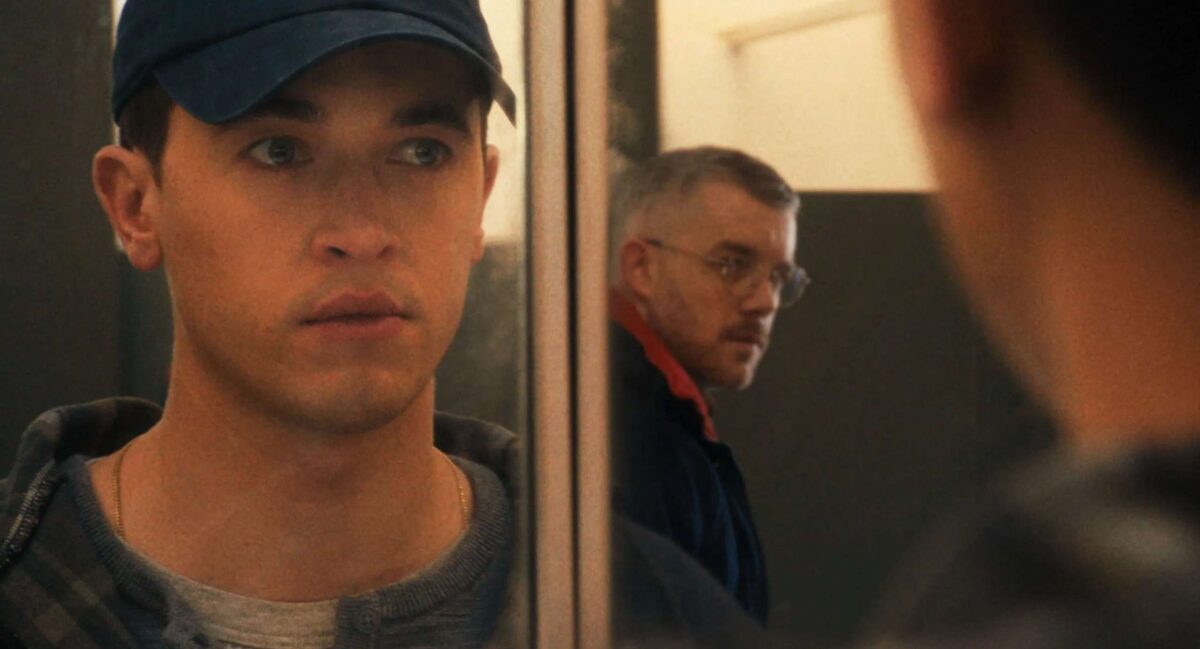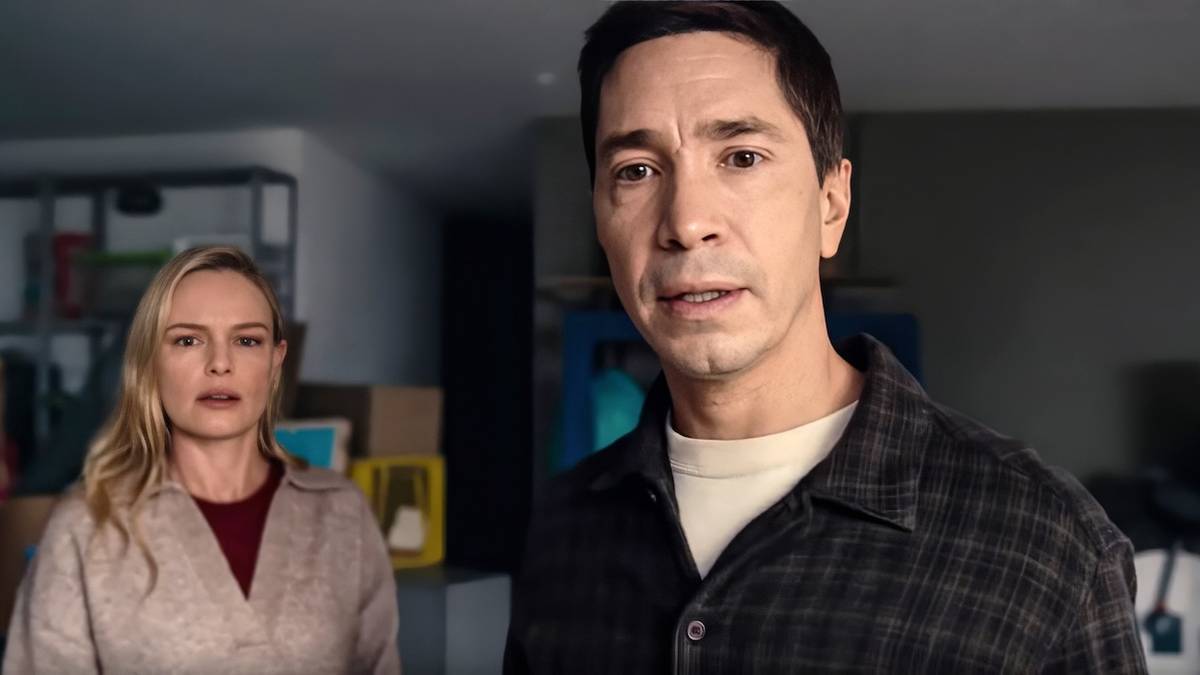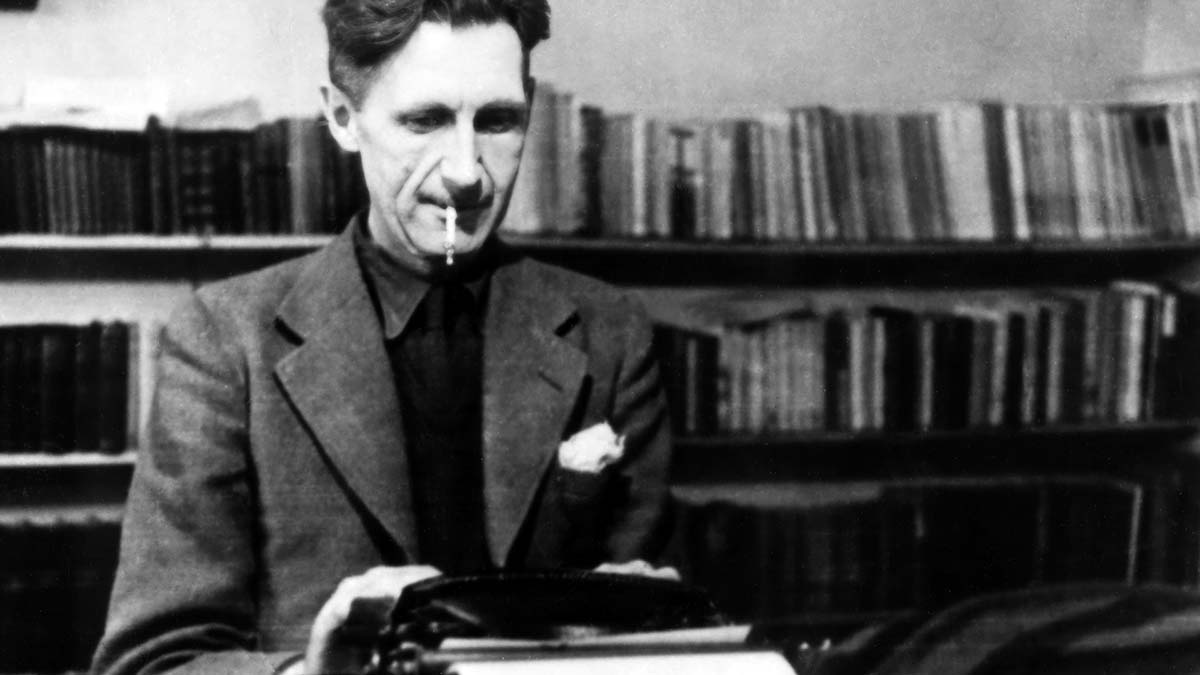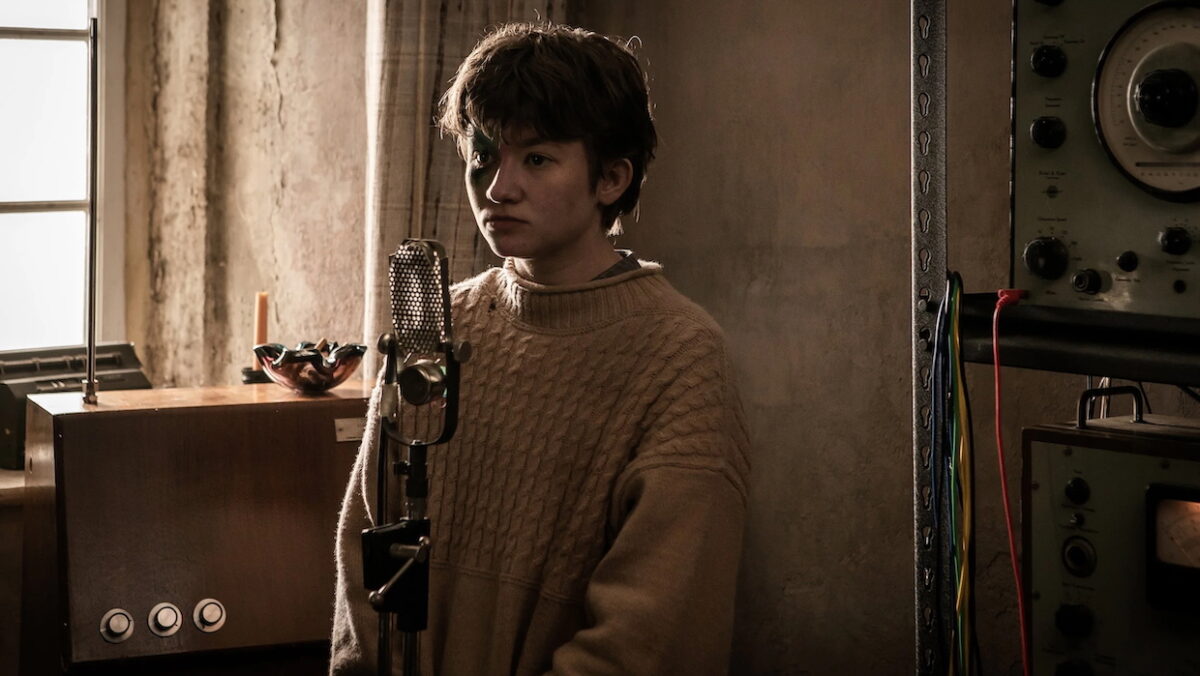
Interview: Sound Designer Graham Reznick on Rabbit Trap
Oct 3, 2025
Jade Croot in Rabbit Trap
What does the sublime sound like? For Graham Reznick, serving as the sound designer for Bryn Chaney’s psychological thriller Rabbit Trap (available on digital Sept. 30, from Magnolia Pictures) was a sustained exercise in experimenting with aural narrative storytelling, searching for the same sorts of subliminally haunting sound effects that alternately entrance and unsettle the film’s musician protagonists.
When Darcy (Dev Patel) and Daphne Davenport (Rosy McEwen) move to a remote house in rural Wales, they seek to draw sounds out of the local landscape, with Daphne interpolating and manipulating Darcy’s field recordings to create experimental compositions marrying electronic distortion effects to more organic sounds from their surroundings. But the music they make after recording strange and very potentially mystical vibrations in a nearby forest awakens local ancient folk magic and the couple suddenly discover a nameless child (Jade Croot) on their doorstep. At first a welcome visitor, the child gradually infiltrates their lives and proves resistant to escalating attempts to free themselves from its influence.
Chaney’s feature directorial debut is a terrific showcase for how the alchemical qualities of sound design and composition can deepen a film’s atmosphere; as the couple’s unease and befuddlement is amplified by unexplainable events, Reznick’s sound design—intertwined so deeply with Lucrecia Dalt’s musical score that the two often feel inextricable—grows increasingly hallucinogenic. Located between bucolic nature sounds and metallic drone ambience, with the couple’s analog tape machines capturing both even as they become progressively degraded and distorted, Reznick’s sound design ably carries Rabbit Trap’s central idea: destabilized with enough force, a sound can take on a life of its own.
Also known for his work as a writer, director, and actor, Reznick is a long-time collaborator of Larry Fessenden, having made his feature directorial debut—the vivid and psychedelic I Can See You—under the auspices of Glass Eye Pix, Fessenden’s New York-based independent film studio, in 2008. Reznick has been prolific as a sound designer on productions by friends and peers like Ti West (The House of the Devil, The Innkeepers), Jim Mickle (Stake Land), and Jon Watts (Clown), but he’d taken an extended hiatus from professional sound design in recent years to focus on other projects. With Rabbit Trap now available digitally, Reznick spoke to Filmmaker Magazine—coincidentally, on the 10-year anniversary of the release of Until Dawn, the horror video game he co-wrote with Fessenden—about the challenges of working in sound on studio productions, the vast auditory magic of mushrooms and the vibrant colors of sounds and frequencies.
This interview has been edited and condensed.
Filmmaker: I first became familiar with your work through Glass Eye Pix, where you oversaw the sound design on early features from Ti West, Jim Mickle and Glenn McQuaid while making your own feature debut. I know you hadn’t worked as prolifically in sound design for a number of years before Rabbit Trap, but I’m curious why that was.
Reznick: So, Ti and I grew up and made films together. We started working with Larry Fessenden at Glass Eye Pix in New York. In about 2015 or so, Until Dawn came out, which Larry and I wrote together. I was writing and directing enough that I took a break from sound design—for years, actually, except for my own work. I had always really enjoyed sound design; because of working with Larry and Ti, being a filmmaker amongst a group of peers coming out of NYU and Glass Eye Pix, I had a kind of access that you might not normally have coming to a project as a sound designer at a studio or a post house. It was the greatest thing in the world, being able to work with my friends and push the sound part of the process forward in a way that I might not get to if I was just one person assigned to a project. Because I was a filmmaker, that helped directors trust me to try things that they might not have otherwise. I was certainly very green and not intending to be a sound designer professionally; it was just something that I could do, and friends asked me to work on sound design because of that.
Anyway, I didn’t do a whole lot of sound design for hire for years—and it wasn’t because the opportunities weren’t there. I was asked to do it fairly often, for people I would have liked to have done it for, but I had a TV show I was doing called Deadwax and couldn’t work on any projects during that period. There was also work that just didn’t work out. I had a directing project set up with Daniel Noah and Elijah Wood at SpectreVision we spent a long time trying to make. Daniel and Elijah are great guys and loyal cheerleaders for people they work with. They’re constantly trying to get people involved, trying to get things moving, trying to get projects going, and I trust them.
When they came to me in 2023 about Rabbit Trap, they said,”We have a script we really like. It’s a first-time director named Bryn Chaney, and we think you’ll really like the script. Would you be interested in coming on board to do sound design?” I had a bunch of video-game things going on at that point, and I was like, “I’ll read it and check it out.” And I loved the script so much; it spoke to everything that I want to do as a sound designer, as well as everything that I’ve liked doing as a director and as a writer. So, I spoke to Bryn and we got along great. I realized, “Okay, this is the kind of project that I would love to be a sound designer on, because I can work with Bryn as a creative peer.” All the stars aligned for me to say yes to the project and, two years later, here we are.
Filmmaker: What had your experiences been like since those early days at Glass Eye Pix? I have to imagine your choices are often more limited, to an extent, on productions where sound design isn’t as intrinsic to the story as it was on Rabbit Trap.
Reznick: I got used to a particular way of doing things, being involved from the script stage with people I knew very well, and could have conversations about the sound design with prior to production, during production, then in post-production as well. In my experience of independent film over the past 20 years—though it changes constantly and is also different from studio films that approach things more holistically—an independent film is produced, then made, then they think about post-production. Once they get into editing, they think about sound design; they either make a deal at the beginning for a post house that does sound or start looking after filming. For a lot of films, that’s fine; lots of films don’t use sound as a creative narrative element but rather to support the film. A lot of times, you can get away with structuring your schedule and business deals that way. But we wouldn’t have been able to do the kind of sound design we did on Glass Eye Pix films without having thought about it at the outset. The budgets were incredibly low, but I was being paid to be almost on staff, in a way, so I was thinking about sound for four or five upcoming movies at the same time over the course of a year. I could start piecing things together and putting things aside, so it wasn’t as if I was jumping in for six weeks once the picture was locked, then mixing. It was an ongoing process of collecting material, working with directors and sometimes even adjusting the script itself to incorporate what they expected out of sound. I’d say that’s the best case scenario, for any element of filmmaking. For instance, there are sections of the script for The Inekeepers where it just reads, “Sara Paxton is sitting in a ballroom at the hotel, holding a microphone up and recording ghosts,” for three minutes. There were elements of that scene that Ti and I talked about that weren’t necessarily in the script, but we knew what we were going to do and could plan ahead of time. Part of me knew how good we had it. In retrospect, there was a very potent scene of people that we could all draw upon. We were all very close to being out of college and didn’t need to make a lot of money, so we could ask each other to work for free constantly.
Filmmaker: Rabbit Trap is set in the mid-1970s, and your designed audio was initially created using gear or methods that would have been available in that era: manipulated reel-to-reel tape, speed-modded cassette players, degraded tape loops. There’s a certain analog fetishism to the sound design, which feels true of plenty of the films you made with Glass Eye Pix as well. Has that been personally important to you?
Reznick: Absolutely. I think analog fetishism is a good way to put it. It’s definitely not frivolous; it’s part of the underlying experience. It goes back to The House of the Devil and other projects like Deadwax: the medium is the message. Ti and I would always talk about how, as soon as you shoot something on film, it looks real. It didn’t look real before, but now it looks like a real movie. Most people alive right now have experienced some amount of the analog world. There are younger people who have grown up almost entirely in the digital world, so this will probably go away at some point, but Brian Eno made a quip about how everybody hates the medium for its flaws but, 10 years later, it’s what they celebrate the medium for. [“Whatever you now find weird, ugly, uncomfortable and nasty about a new medium will surely become its signature. CD distortion, the jitteriness of digital video, the crap sound of 8-bit – all of these will be cherished and emulated as soon as they can be avoided.”] I have no problem leaning into that. To me, it’s similar to the idea of your personal style as an artist being a collection of your “flaws.”
What was appealing to me about working on this film was exactly this: the allure of being able to manipulate audio to the point of making it something unknown and unique. Being able to do that in the digital world is very easy and fun, but it almost always has a digital quality to it; to do it in the analog world is a different thing entirely. It’s a form of athleticism. You practice at it, and you become better at it as you do it. For example: with the opening monologue in the film, which the child says while there’s an oscilloscope on the screen, we had a recording of that monologue from the studio that she recorded in. It was sent to us, I processed it a bit originally to clean it up and make it sparklingly crystal-clear. We ran it to tape, then ran it back into the computer 15 times, and each time we would mess with the sound. We’d shake the reels and play with the Azimuth, with the way it sat on the playback heads, then stack those up and carefully intercut between them. We weren’t being analog absolutists, but rather using both analog and digital tools in a modern way to carry the story.
Filmmaker: What can you share about that array of analog and digital tools you were using on Rabbit Trap, particularly in terms of reel-to-reel cassette players and tape loops?
Reznick: I love collecting gear, getting new toys to play with, but I don’t have the kind of money to get fancy equipment. I also don’t want to, because I like abusing the equipment to see what happens with it. I’m the same way with video, but especially in audio, it’s exciting to see how far you can push a piece of equipment past its intended use. The whole ethos, for some companies, is creating gear that takes you to that point right away. I don’t want to break their gear, but they allow me to use their gear in a way that I don’t have to push it that far.
This company, Landscape in Brooklyn, makes this piece of gear, called the HC-TT, which is a hand-cranked cassette tape transport. You put a tape in, and you can crank it like reel-to-reel; most of the fairy-circle voices in the film were made using this. I recorded my seven-year-old singing a few minutes of the theme song to Barbie: Life in the Dreamhouse; after cranking those snippets back and forth very slowly in the HC-TT, I ran them through an array of guitar pedals, including one that allows you to simulate low voltage, as if the power is shifting in and out. I put all that together in Pro Tools with other plug-ins, and it created those little voices you hear throughout the film. It took several days of recording, editing and layering audio to create that effect. I also used the Stereo Field, which has these touch-capacitive metal plates you can touch with your hands to create a circuit. I could put anything organic on it, so I would run audio and electrical currents through mushrooms, flowers, leaves. I would manipulate the mushrooms, then use that noise as a starting point for a lot of the textures you hear in the film.
Filmmaker: Did different mushrooms create different sounds?
Reznick: I went to Ralph’s and got as many different mushrooms as I could. I wasn’t in Wales, and I didn’t think I could have imported Welsh mushrooms. But the larger mushrooms were better, because they could cover a larger expanse of the sensor, so you could touch and manipulate them a little more easily to create sounds as you’re running an electrical current through them. Learning how to manipulate audio, you realize quickly you can turn any sound into anything else with enough manipulation. You can get to any finish line from any starting point.
What’s exciting is finding certain audio that thematically or emotionally resonates with particular narratives. Using mushrooms allowed us to create a guardrail, to see what sounds we could get out of them. I enjoy finding places for spectogram material—inspired by Aphex Twin, who’d hide self-portraits in the audio of songs he released—so we would also take specific occult symbols that meant something to Bryn and the film, transform them from image to audio with a spectogram analyzer, then use that as the basis for drones and other sound elements.
Filmmaker: The whole practice of analog electronic work, for me, brings to mind that Andrei Tarkovsky concept of cinema as sculpting in time. It feels elemental because it’s so physical: manipulating electricity, wrestling with the sounds you draw up, until you’ve created music.
Reznick: Sculpting is one of the best ways to put it. Initially having plotted out a career in visual art and then having moved into the broader gestalt of filmmaking, writing and sound, sculpting or painting are ways I think about all of those aspects of filmmaking. With sound, especially, you’re looking at 200 audio tracks, as if you’re layering paint. Different sounds and frequencies have different colors to them, the way that paint does—not synesthetically, per se, but you are blending ingredients in the same way you’d apply paint to a canvas.
Most of the films that I have worked on as a sound designer, I have also done a good portion of what’s considered the music for the film, even though I’m not a composer—additional music, right? Luckily, I’ve worked with a lot of composers who are very open to us manipulating their work, bringing it into the broader soundscape and fitting things together. In Rabbit Trap, it can be incredibly difficult to say, at any given point, whose work you’re hearing, because there’s a good portion of Lucrecia Dalt’s incredible score blended together with my work. We were lucky our styles were so compatible. There are times where it’s definitely just hers, or definitely just mine, but for example there’s the scene where Darcy first walks up to the fairy circle and is recording these sounds, and it does shift at various points between my work [and] Lucrecia’s work.
Lucrecia recorded most of her music prior to the edit, so she was also working very early, as was I, though I wasn’t delivering finished material that early. But I had done a lot of tape manipulation experiments, including everything with my daughter’s vocals and a bunch of weird soundscape or tape-track elements that I gave to Brett W. Bachman, our incredible editor. He came onto this film and did the second pass, working with Lucrecia’s material and my material. He did a first pass laying out where things would go and how they might blend together, and we deconstructed it a lot later in the process and pieced it all back together. But for me to see what was envisioned holistically by the editor was insanely helpful. It helped me to see where all the work fit together; and since I wasn’t involved in the picture-editing part of the process, seeing everything seamlessly blended together was permission to keep going further.
Filmmaker: The film opens with Darcy recording the sounds of a murmuration of starlings, which his wife Daphne then manipulates to create this piece of music. Interplay between the field sound recordist and the sound designer is so directly a part of Rabbit Trap. Tell me about working with your production sound recordist Adam Fletcher and how you were bringing in what he was recording on set.
Reznick: That opening section is 90% sound design until the beat starts coming in, then it changes over again very seamlessly and blends right into the music, which is how the scene is meant to play out. That was the first scene we attempted. We had to do a submission for Sundance, so we did a vertical slice of the opening scene very early on. I believe in January of 2024, Bryn and Brent and myself came together and spent a week working on a version of that, figuring out exactly how the balance and blending of those elements would work. That set a template for the film. With Adam, who was recording as much on set as one does, my only request was for the production to send him out to get additional recorded material, because that doesn’t often happen. He was very excited to record a lot of ambiences that could feed into the soundscape, so that was very important.
Filmmaker: Was he recording the sounds of flora and fauna, as well as the ambience of the setting? Where did those kinds of living sounds, like birdsong, come into play?
Reznick: We added a few animals in post. Bryn and I spent way too long looking for the right cuckoo to put in the background of one scene—which I think may have actually been cut from the film, though we spent three days auditioning cuckoos, going on different sound effects libraries and field recording libraries, trying to find the right one. Since Bryn is from that area, he is very sensitive to specific kinds of sounds. I would add a lot of animal sounds in, and there were insects and crickets in certain scenes that I’d read were native to the UK or that area, and Bryn would go, “No, that is not what it sounds like there. We can’t do that.” Because Bryn has that knowledge, we were able to be a lot more accurate with the palette of the soundscape.
Filmmaker: I’m curious whether you brought in any particularly leporine sound effects, given the role that rabbits play in the story. I can’t really articulate this clearly, but there’s a quivering sort of tension to the sound design that feels evocative of this heightened awareness or alarm that I could see relating to rabbits.
Reznick: I looked into rabbit sounds, and they don’t really make sounds, which is kind of weird. There’s this little, squeaking whine that they make every once in a while, but they’re relatively silent creatures. I mean, they don’t purr. There’s a little bit of a squeak when they are agitated, and this snipping sound, but there wasn’t enough to do much with it. That was an earlier idea for a theme that I looked into, but I ended up utilizing a lot of the starling sounds throughout the film, because that was one that we needed as part of the narrative. That said, I did think carefully about the child’s place in the narrative, and—while trying to avoid spoilers here—there was meant to be this feeling, the same one as when you see a cat lying on the ground and put your hand on its side. You do that with a rabbit, and feel this pulsating warmth and know that it’s alive. The sound design of this film was like that.
There are a lot of low, bass-y drones and throbbing, thrumming, humming low-end sounds throughout, and they’re meant to induce dread to some degree, but I also felt the life in them. Then, there is a certain point in the film where, very consciously, the characters are all together, and something is about to leave the world of the film, and all that low-end just slowly drains out. You just feel this breath, like a death rattle. We worked on that scene in the mix of that scene for a very long time, because it was meant to feel like that. I’ve had a lot of pets, and I had two cats that we put to sleep about five years ago, and it was one of the saddest things that I have gone through as a pet parent. We did it at home. We had specialists come. You put your hand on them—you’re holding them, essentially, as life is ebbing away. That scene of the film was meant to feel like that, to me.
Filmmaker: Thank you for sharing that. It’s an extremely moving scene.
Reznick: It was meant to be gentle, letting go in this moment. Bryn drew a very beautiful portrait of that experience, so my goal was to have the sound express that for him as much as possible.
Filmmaker: One last clarifying question on recording equipment, if I may: the reel-to-reel tape recorder that Darcy and Daphne use is called the Nagra E, which was made in 1976 and treated as a narrative cut-off point for the equipment that appeared on screen in the film. Did you get to use that Nagra at all in your work?
Reznick: Man, I wish. No, I think that was a rental, or they borrowed it. I’m not sure exactly what the provenance of that was on screen. I used a ’78 Akai reel-to-reel, so not so different, and a lot of the audio that we manipulated went through an Akai deck. It’s fairly similar. But it’s funny you mention that—on I Can See You, I hired a sound recordist specifically because I heard he used a Nagra. There was a huge dividing line in energy of performance, when people started recording digitally about 35 years ago, and switched from recording on tape to recording digitally. When people shout, and they get that pop on tape, it sounds real. Somebody shouts and they blow out on a Nagra tape; that’s how movie shouting should sound. When things sound too limited and clean or clear on a digital recording, it doesn’t work as well to me. We manipulated things quite a bit through tape. There’s a scene where the child gets very loud and screams, and there’s some manipulation going on there to try to accomplish that as well. I did have a second request with the sound team, which was to record through the mic as much as possible, which they did. It wasn’t always totally possible. Some things we had to fake. I don’t remember if the Nagra could be recorded onto; it might not have been possible to actually record onto it. Working with old gear is temperamental; you have great ideas and plans to do things like that, but then you get into the realities on a set, and there are 100 people trying to do things in 10 minutes or less.
Rabbit Trap is available digitally Sept. 30, via Magnolia Pictures.
Publisher: Source link
Erotic Horror Is Long On Innuendo, Short On Climax As It Fails To Deliver On A Promising Premise
Picture this: you splurge on a stunning estate on AirBnB for a romantic weekend with your long-time partner, only for another couple to show up having done the same, on a different app. With the hosts not responding to messages…
Oct 8, 2025
Desire, Duty, and Deception Collide
Carmen Emmi’s Plainclothes is an evocative, bruising romantic thriller that takes place in the shadowy underbelly of 1990s New York, where personal identity collides with institutional control. More than just a story about police work, the film is a taut…
Oct 8, 2025
Real-Life Couple Justin Long and Kate Bosworth Have Tons of Fun in a Creature Feature That Plays It Too Safe
In 2022, Justin Long and Kate Bosworth teamed up for the horror comedy House of Darkness. A year later, the actors got married and are now parents, so it's fun to see them working together again for another outing in…
Oct 6, 2025
Raoul Peck’s Everything Bagel Documentary Puts Too Much In the Author’s Mouth [TIFF]
Everyone has their own George Orwell and tends to think everyone else gets him wrong. As such, making a sprawling quasi-biographical documentary like “Orwell: 2+2=5” is a brave effort bound to exasperate people across the political spectrum. Even so, Raoul…
Oct 6, 2025
